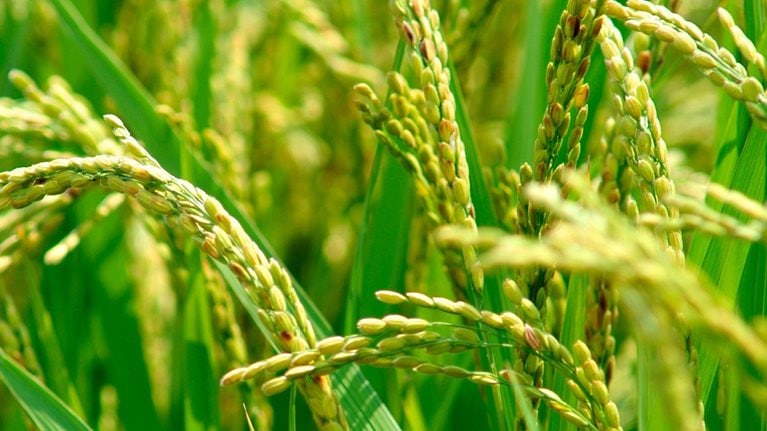The past ten years have seen unprecedented growth in protein demand across the globe. Total global meat consumption rose by about 2 percent a year, nearly half of which came from China.1 Industry participants capitalized on this growth through investments across the protein value chain: meat-processing giants vertically integrated upstream through acquisitions of genetics, feed-manufacturing, and animal-production companies; animal-health and nutrition companies pursued geographic and portfolio expansion; and laboratory start-ups attracted investment capital to pioneer tissue-culture engineering and other novel animal-production systems.
Stay current on your favorite topics
The next ten years are going to look notably different from the past decade. While aggregate consumption of meat proteins will continue to rise, the growth rate is expected to slow by as much as 50 percent—to 1.0 to 1.5 percent a year—and the growth will be concentrated in discrete pockets. This will be an era marked by macroeconomic, demographic, and nutrition-driven-preference shifts, certain to present threats and opportunities for current industry participants and entrants alike. Animal-protein-replacement products such as plant-based proteins and synthetic meat are increasingly competing for share of protein consumption in select markets, spurred especially by consumers’ concerns over the environmental impact of livestock production. Adjacent protein markets are expected to present additional opportunities. Global consumption of dairy products, for example, is forecast to grow by about 1.5 percent a year to 2025, paced by sub-Saharan African consumption at about 3.0 percent a year.
Successful participants in the meat-protein market will be those that adjust their operational and investment strategies to the demand shifts under way, take a regional view to inform national investment decisions, and build capabilities to better understand and react to changes in the regional competitive environment.
What will shape meat-protein demand
Four critical developments will influence meat-protein demand to 2025 and beyond.
Not all countries will converge toward a Western diet
Growth in aggregate population and per capita income are expected to continue to propel global demand for meat proteins. Even as incomes rise, however, significant differences in local dietary preferences will lead to divergent patterns in protein consumption worldwide. Clearly, income matters—daily caloric intake from animal products is 50 to 100 percent higher in countries with per capita income2 over $30,000 than those with per capita income of $4,000 to $20,000.
Still, livestock-product consumption across countries has exhibited two distinct trajectories. One set of countries—notably Anglo-Saxon markets, Argentina, Brazil, and China—displays a strong preference for meat. On the other hand, most countries in Asia–Pacific, much of the Middle East, Mexico, and the rest of Latin America show a low meat preference, with a higher share of protein coming from nonmeat sources such as legumes and seafood (Exhibit 1).

India’s path will differ from that of China’s
While India’s population is expected to overtake that of China by 2025, national meat consumption will total less than 10 percent of China’s at the same time. India provides a stark example of why it’s not all about income—dietary preferences are also influenced by cultural factors.
In India, Kerala and Punjab, for example, are relatively prosperous states with comparable per capita incomes. But whereas only 8 percent of Kerala’s population is vegetarian, nearly 80 percent of Indian Punjab is vegetarian.3 In fact, only three of 29 states saw a decline in vegetarianism from 1994 to 2012 of ten percentage points or higher,4 and many states have regulations prohibiting either the slaughter or sale of cattle.
Would you like to learn more about our Agriculture Practice?
India’s large population and particularity of dietary preferences, however, ensure that the nation will be a nontrivial factor in consumption growth in specific markets. For example, India is expected to trail only China and the United States in its contribution to incremental demand for poultry to 2025, accounting for 5 to 10 percent of global market growth.
China will remain the biggest single market despite a slowdown in demand growth
Per capita meat consumption growth is forecast to grow at only about 1 percent a year until 2025. As the population plateaus and the proportion of citizens in poverty decreases, the animal-protein story in China is expected to reflect a slight shift in mix rather than sustained volume growth.
China is still forecast to account for nearly 30 percent of incremental demand for meat to 2025, given its huge population, high meat preference of its consumers, and a parallel slowdown in protein-demand growth in other major consumer markets. China will likely require an additional 250,000 tons of imported beef by 2025—about a 40 percent increase compared with 2015 levels. Thus, China is expected to remain a market of competitive focus for major beef exporters across the globe (Exhibit 2).

Several ‘hot spots’ will spur incremental demand growth
As noted above, China is an important part of the growth story for every livestock category, and it is expected to contribute more than 20 percent of incremental demand for beef and poultry, and nearly 50 percent for pork and sheep meat. Some growth pockets are driven largely by a cultural preference—for example, mutton and goat in the Middle East and Africa, or seafood and alternative proteins in Southeast Asia.
Industry participants should remain alert to market-specific growth anomalies as well. For example, Pakistan is expected to trail only Brazil, China, and the United States as an incremental driver of beef demand; Indonesia, the Philippines, and Vietnam will collectively account for about 10 percent of incremental poultry demand. Sub-Saharan Africa is projected to make up about one-fifth of incremental beef demand, buoyed by population growth and income expansion. Capturing growth from hot spots will require a departure from business as usual for livestock producers and processors (Exhibit 3).

What a cost curve reveals about industry dynamics
As we saw, demand shifts will play a critical role in shaping the evolution of animal-protein markets. So will changes to global production footprints and associated trade patterns, which will create opportunities for players across the value chain. Generating livestock-production cost curves—such as those for major exporters of beef into Asia—can help investors, farm managers, and other businesses make strategic decisions that optimize for cost efficiency and productivity alike. According to McKinsey’s Agricultural Commodity Research Engine, an analytical tool, production dynamics and macroeconomic developments will underpin the costs of different regions’ beef exports to East and Southeast Asia (Exhibit 4).

The importance of cost–quality trade-offs
The two largest beef exporters to the region are Australia and India. Their industries are at either end of the cost curve. India’s buffalo meat, or “carabeef,” sent to China and the Philippines, obtains a price far below that of the Australian grass-fed, pastured beef that consumers in Japan and South Korea prefer. National policies and consumer preferences favoring a shift to higher-quality beef are likely to initiate a trade rebalancing to the advantage of Australian and New Zealander exporters, at the expense of lower-cost producers at the other end of the cost curve.
It’s anyone’s game in the middle of the pack
At present, there is little difference in costs of delivered beef to Asia across producers in North and South America. All-in costs for Brazil, the United States, and Uruguay, for example, vary by less than $5 per 100 kilograms. But even marginal changes in exchange rates, tariffs, and productivity can have dramatic effects.
How productivity growth will affect Latin America
Latin America enjoys a strong export position today because of favorable exchange rates, effectively sheltering producers from lagging productivity (for example, average daily weight gain per animal of less than 60 percent of US and Canadian producers). Understanding that favorable exchange rates may not last forever, it will be critical for the competitiveness of the region to focus on improving productivity. There are several conflicting factors that will determine this. Headwinds from continued deterioration of pasture quality will challenge feed efficiency along with the threat of rising input costs (for example, labor costs increasing two to three times faster than in the United States). Conversely, improvements in herd genetics and the acceleration of animal health and nutrition industries may be key levers to counter these effects.
The impact of a commodity-price rebound
With prices at historic lows, a rebound to 2013 levels would greatly reduce cost competitiveness of grain-intensive feedlots. Doubling corn prices would raise all-in costs in Argentina, Canada, and the United States by 10 to 20 percent,5 eroding US competitiveness with Brazil and Uruguay, and placing Argentina and Canada behind New Zealand on the cost curve.
Adjusting to demand shifts
Individual actors should reconsider whether their operational and investment strategies are aligned with the demand shifts under way. Adjustment will mean more than the identification of logistics partners and customers downstream in new centers of demand. Vast differences in beef-production quality, exchange rates, and costs of trade and transport require that activities further upstream be reevaluated in parallel. Across the value chain, winners will be those that can identify and ensure best-in-class supply-chain positioning and asset efficiency to capitalize on demand-driven opportunities.

How big data will revolutionize the global food chain
Focusing on subnational perspectives
A national perspective on supply–demand relationships will not be sufficient to make informed strategic decisions in the meat-protein sector. Regional differences in animal-protein production efficiency, transportation infrastructure, availability of quality feed, and meat-quality characteristics result in vast discrepancies in all-in costs. The delivered cost of beef to China, for example, is 15 percent higher from the state of Queensland relative to Victoria in Australia, and nearly 125 percent higher in the south relative to the north of Brazil. The ability to benchmark costs, return on investment, and capabilities at the subnational level will become increasingly central to businesses’ establishment of competitive advantages over competitors.
Building analytical capabilities to improve strategic agility
Marrying scenario modeling with strategic flexibility is key for decision makers across the meat-protein value chain. Recent months have displayed the potential for major trade policy shake-ups, whether encompassing back-and-forth bilateral tariff adjustments or the threat of regional trade agreements’ dissolution. Feed costs have shown themselves to be particularly volatile in the past decade—with global corn and soybean prices sitting at about 50 percent of their peak observed in 2012—and heavily subject to climatic instability. Resource constraints, technical know-how, and consumer preferences are exerting competing pressures on animal-production practices. Critical to success in this landscape will be building analytical capabilities and management processes to understand and react to regional cost competitiveness of global meat supply in real time.
Investment and innovation across the meat-protein value chain is certain to proceed for years to come as global consumption of animal protein rises. Participants will, however, need to adjust to a new landscape of demand according to the four developments outlined. Success will likewise hinge on the ability to marry this understanding of trends with a view of how supply chains may shift. We hope that this article contributes to a greater understanding of the evolution of protein supply and demand and that it encourages meat processors, investors, and other stakeholders to reflect on their next steps.


